队列:生产消费模式及线程池的运用
关注公众号 MageByte,设置星标获取最新干货。 “加群” 进入技术交流群获更多技术成长。
向固定大小的线程池投放请求任务时,若果线程池中没有空闲资源了,这时候还有新的请求进来,线程池如何处理这个请求?拒绝请求还是排队?使用怎样的处理机制
一般两种策略:
- 直接拒绝任务请求;
- 将请求排队,等有空闲线程的时候取出排队的请求继续处理。
那如何存储排队的请求呢?这就是今天要讲的话题。
其底层的数据结构就是今天我们要讲的内容,「队列」Queue。
完整代码详见 GitHub:https://github.com/UniqueDong/algorithms.git
什么是队列
用一个生活例子,可以想象成超市排队结账,先来的先结账,后面的人只能站在末尾,不允许插队。先进先出,这就是所谓的「队列」
队列是一种线性数据结构,队列的出口端叫「队头」,队列的入口端叫「队尾」。
与栈类似队列的数据结构可以使用数组实现也可以使用链表实现。关于栈的内容同学们可以翻阅历史文章学习「栈:实现浏览器前进后退」,队列最基本的操作也是两个:入队 (enqueue) ,将新元素放到队尾;出队 (dequeue),从队头移除元素,出队元素的下一个元素变成新的队头。
作为基础的数据结构,队列的应用也很广泛,尤其是一些特定场景下的队列。比如循环队列、阻塞队列、并发队列。它们在很多偏底层系统、框架、中间件的开发中,起着关键性的作用。比如高性能队列 Disruptor、Linux 环形缓存,都用到了循环并发队列;Java concurrent 并发包利用 ArrayBlockingQueue 来实现公平锁等。
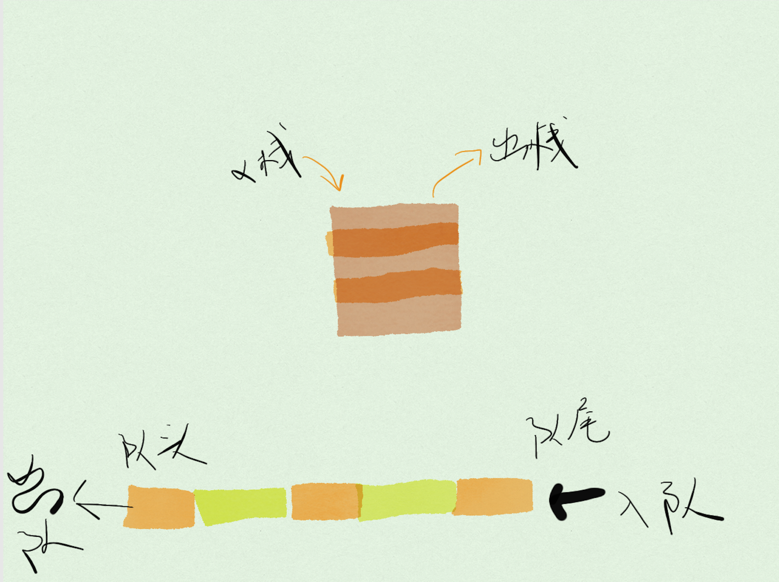
队列也是一种操作受限的线性表数据结构。
顺序队列与链式队列
队列是跟栈一样,是一种抽象的数据结构。 具有先进先出的特性,在队头删除数据,在队尾插入数据。
可以使用数组实现,也可以使用链表实现。使用数组实现的叫 顺序队列,用链表实现的 叫 链式队列。
顺序队列
一起先来看数组实现的队列:
- 出队操作就是把元素移除队列,只允许在队头移除,出队的下一个元素成为新的队头。
- 入队操作就是把新元素放入队列,只允许在队尾插入,新元素的的下一个位置成为队尾。
随着不停地进行入队、出队操作,head 和 tail 都会持续往后移动。当 tail 移动到最右边,即使数组中还有空闲空间,也无法继续往队列中添加数据了。这个问题该如何解决呢?
当出现这种情况的时候我们就需要做数据迁移。如图所示:当 abcd 入队后,对应的指针位置。
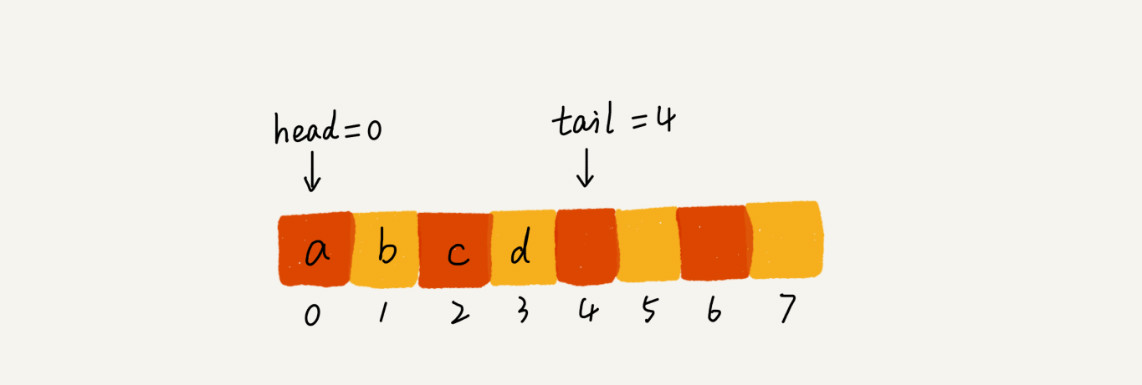
现在我们执行出队操作
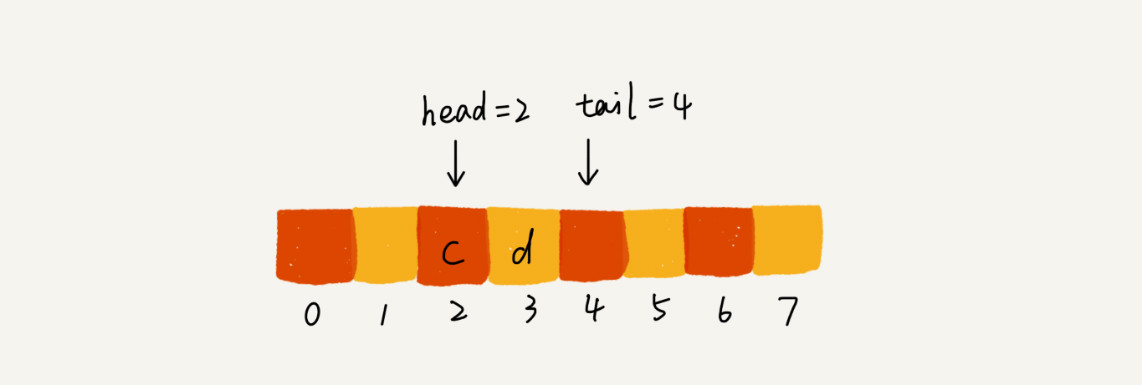
当我们调用两次出队操作之后,队列中 head 指针指向下标为 2 的位置,tail 指针仍然指向下标为 4 的位置。
迁移操作其实就是把整段数据移动到数组 0 开始的位置。
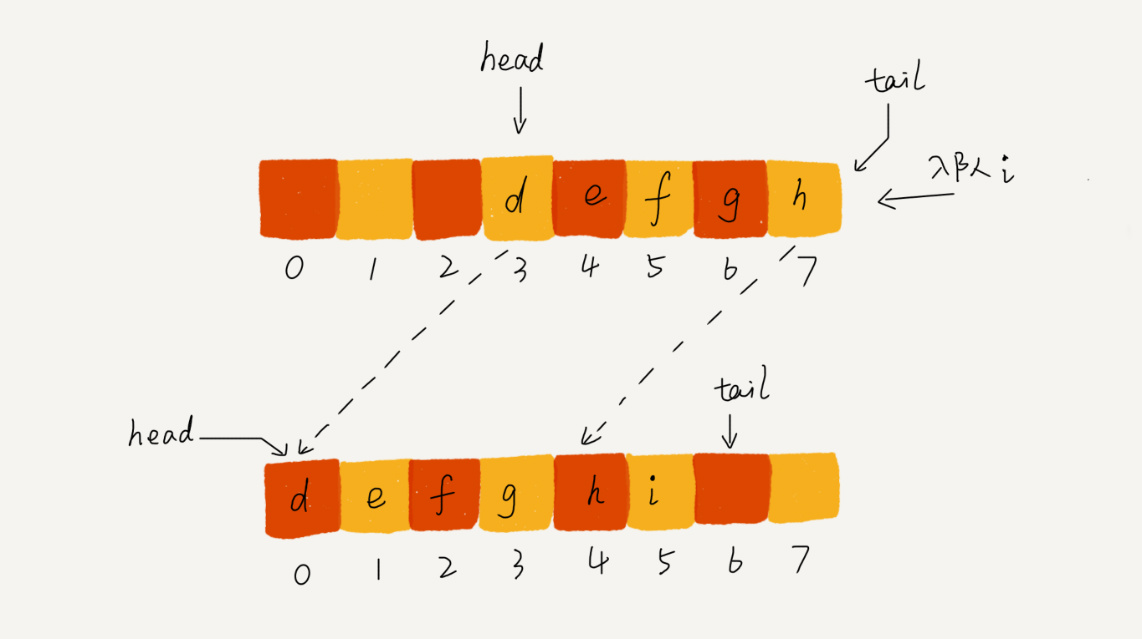
具体代码如下
/**
* 数组实现队列
*/
public class ArrayQueue<E> extends AbstractQueue<E> {
/**
* The queued items
*/
final E[] items;
/**
* 队头指针
*/
private int front;
/**
* 队尾指针
*/
private int rear;
/**
* Creates an ArrayQueue with the given capacity
*
* @param capacity the capacity of this queue
*/
public ArrayQueue(Class<E> type, int capacity) {
if (capacity <= 0) {
throw new IllegalArgumentException();
}
this.items = (E[]) Array.newInstance(type, capacity);
}
public int capacity() {
return items.length;
}
@Override
public E dequeue() {
if (front == rear) {
throw new IllegalStateException("Queue empty");
}
return items[front++];
}
@Override
public boolean enqueue(E e) {
if (isFull()) {
throw new IllegalStateException("Queue empty");
}
// 队尾没有空间了,需要执行数据迁移
if (rear == capacity()) {
// 数据迁移
if (rear - front >= 0) {
System.arraycopy(items, front, items, 0, rear - front);
}
// 调整 front 与 rear
rear -= front;
front = 0;
}
items[rear++] = e;
return true;
}
@Override
public boolean isFull() {
return rear == capacity() && front == 0;
}
@Override
public boolean isEmpty() {
return front == rear;
}
}
链式队列
我们可以通过之前学习过的链表来实现队列,具体详见单向链表篇 。其实主要就是利用了 出队就是链表头删除数据,入队就是尾节点添加数据
public class LinkedQueue<E> extends AbstractQueue<E> implements Queue<E> {
private final SingleLinkedList<E> linkedList;
public LinkedQueue() {
this.linkedList = new SingleLinkedList<>();
}
@Override
public E dequeue() {
if (linkedList.isEmpty()) {
throw new IllegalStateException("Queue empty");
}
return linkedList.remove();
}
@Override
public boolean enqueue(E e) {
return linkedList.add(e);
}
@Override
public boolean isFull() {
return false;
}
@Override
public boolean isEmpty() {
return linkedList.isEmpty();
}
}
循环队列
刚刚的例子,当 rear == capacity 的时候,会出现数据迁移操作,这样性能受到影响,那如何避免呢?
原本数组是有头有尾的,是一条直线。现在我们把首尾相连,扳成了一个环。
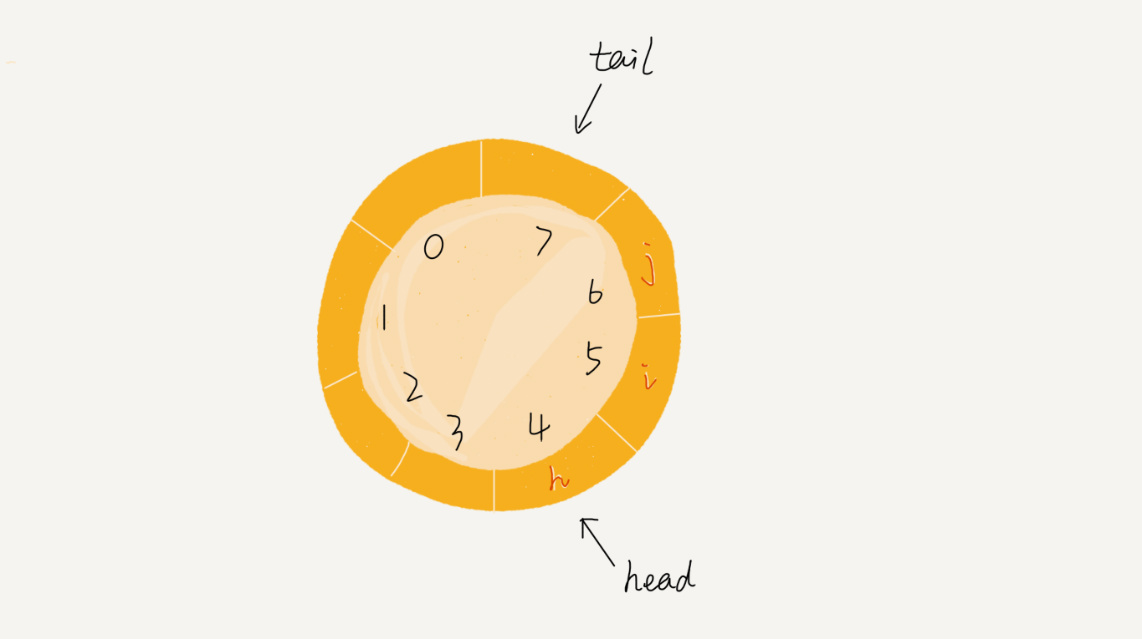
我们可以看到,图中这个队列的大小为 8,当前 head=4,tail=7。当有一个新的元素 a 入队时,我们放入下标为 7 的位置。但这个时候,我们并不把 tail 更新为 8,而是将其在环中后移一位,到下标为 0 的位置。当再有一个元素 b 入队时,我们将 b 放入下标为 0 的位置,然后 tail 加 1 更新为 1。所以,在 a,b 依次入队之后,循环队列中的元素就变成了下面的样子:
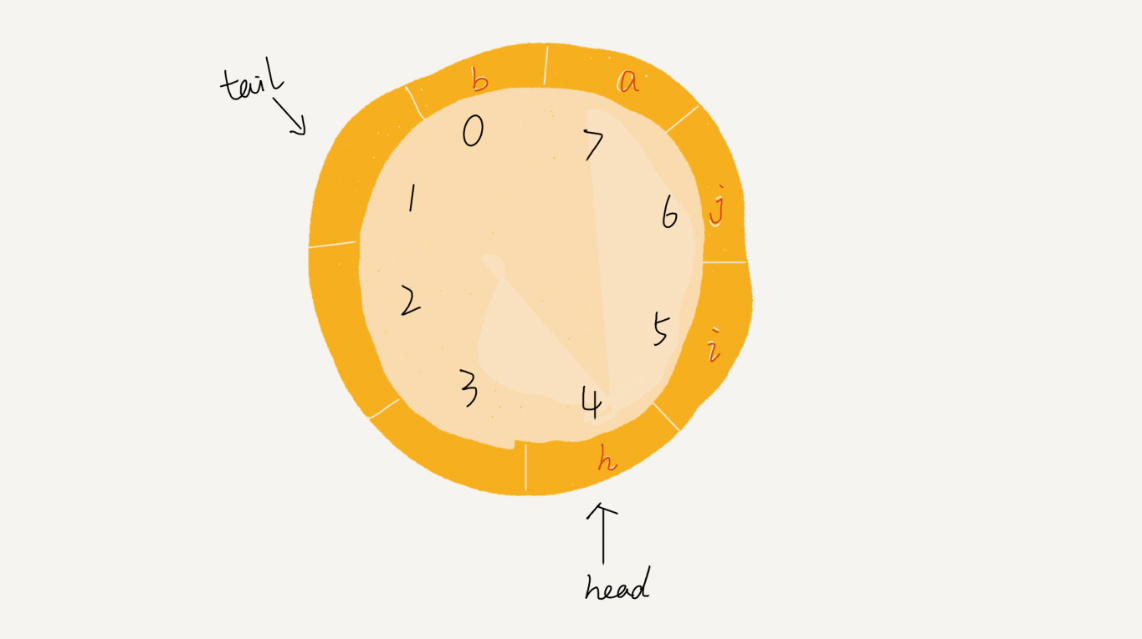
队列为空的判断依然是 front == rear,队列满的条件则是 (rear + 1) % capacity = front
你有没有发现,当队列满时,图中的 tail 指向的位置实际上是没有存储数据的。所以,循环队列会浪费一个数组的存储空间。
/**
* 数组实现环形队列
*
* @param <E>
*/
public class ArrayCircleQueue<E> extends AbstractQueue<E> {
/**
* The queued items
*/
final E[] items;
/**
* 队头指针
*/
private int front;
/**
* 队尾指针
*/
private int rear;
public int capacity() {
return items.length;
}
/**
* Creates an ArrayQueue with the given capacity
*
* @param capacity the capacity of this queue
*/
public ArrayCircleQueue(Class<E> type, int capacity) {
if (capacity <= 0) {
throw new IllegalArgumentException();
}
this.items = (E[]) Array.newInstance(type, capacity);
}
@Override
public E dequeue() {
if (front == rear) {
throw new IllegalStateException("Queue empty");
}
E item = items[front];
front = (front + 1) % items.length;
return item;
}
@Override
public boolean enqueue(E e) {
checkNotNull(e);
int newRear = (rear + 1) % items.length;
if (newRear == front) {
throw new IllegalStateException("Queue full");
}
items[rear] = e;
this.rear = newRear;
return true;
}
@Override
public boolean isFull() {
return (rear + 1) % items.length == front;
}
@Override
public boolean isEmpty() {
return rear == front;
}
}

推荐阅读
4.线性表之数组
5.链表导论-心法篇
7.双向链表正确实现
原创不易,觉得有用希望随手「在看」「收藏」「转发」三连。